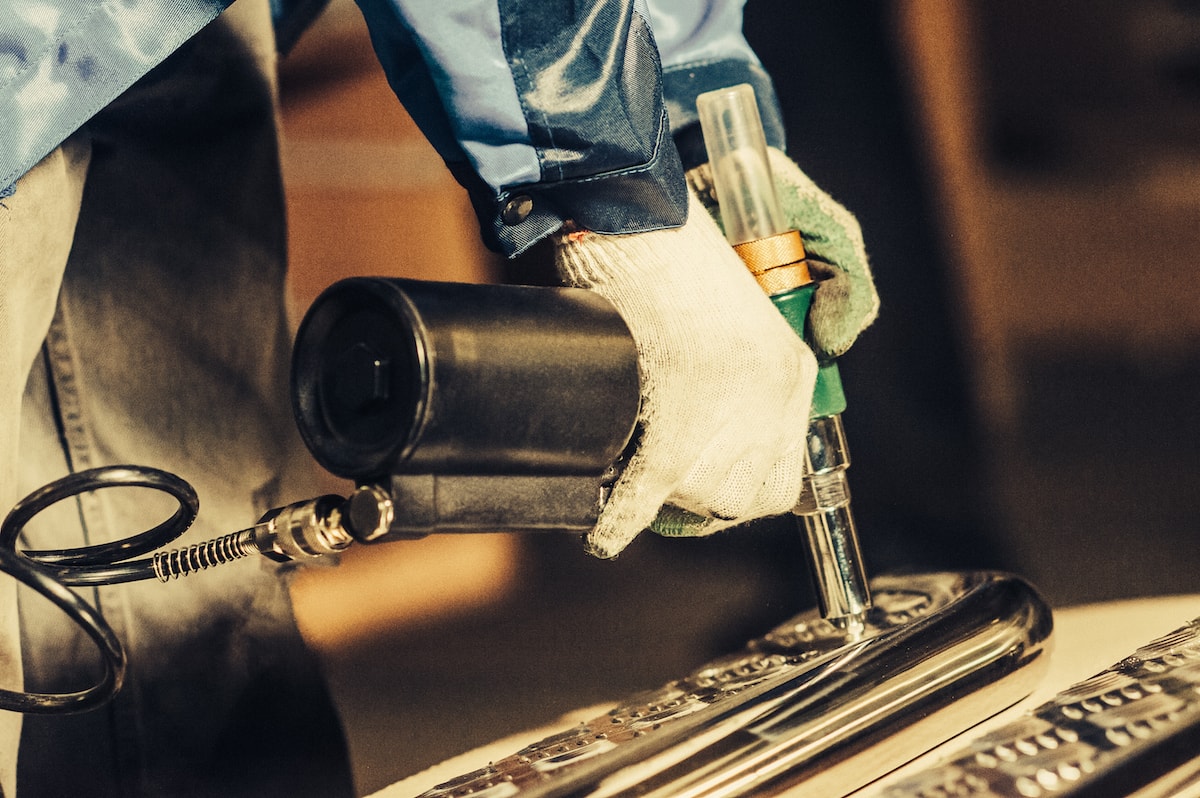
A modern Boeing 747 contains about 1 million rivets. If each rivet took a hypothetical five seconds to place, you would need more than 57 days around the clock to complete the job. Of course, building a 747 takes longer than 57 days, but you get the idea—the labor behind the riveting for creating such an enormous machine is substantial.
Now imagine if you were placing each rivet with a manual tool, and each rivet took longer than five seconds to place. The time would increase exponentially, and if a team of riveters was handling the job, they would probably get a little fatigued. Plus, would you trust flying in a 747 that was riveted entirely by hand?
Pneumatic rivet guns changed construction and manufacturing more than a century ago. Instead of tools and brute strength, rivets could be attached more efficiently, more cleanly, and with less effort. Riveting hasn’t been the same since.
Air Time
Pneumatic rivet guns (also known has pneumatic hammers) operate according to a simple concept: Compressed air propels the rivet into place when the user presses the trigger. The process is incredibly quick—simply place the rivet on the end of the tool; then insert into the hole and fire. The rivet is delivered into the space, and the tail of the rivet is compressed to lock it in place.
Air rivet guns require, of course, air to work. A hose connects the tool to an air compressor, and the gun resets almost immediately after firing. Large, industrial air rivet guns used on structured steel often require two hands and a steady user, but smaller guns resemble tools such as a power drill (and ergonomically mimic) that are simply load, point, and shoot.
Pros of Air Rivet Guns
Air rivet guns offer innumerable advantages over manual riveters and depending on the application are preferable to cordless, battery-powered rivet guns. Some of the pros of pneumatic riveters include:
- Lightweight construction: Modern handheld air rivet guns won’t wear out your arms; even the more heavy-duty models don’t weigh more than 12 pounds.
- Ease of use: Pneumatic guns follow a simple process to attach rivets. This allows users to place multiple rivets in a short span of time, without placing the physical stress on their hands that a manual riveting tool would.
- No rechargeable power source necessary: Unlike cordless rivet guns, you won’t be worrying about a charge running out or replacing batteries.
- Quality riveting: Air rivet guns deliver a precision attachment every time with little effort. The margin of error is much less than with a manual riveter.
Cons of Air Rivet Guns
Pneumatic rivet guns aren’t perfectly suited for every application, and the tool presents some drawbacks, including:
- Limited range: Air rivet guns will only go as far as their air hoses will take them, so in some hard-to-reach areas, you might need a manual or cordless riveter instead. And for some types of remote work, access to a compressor simply isn’t an option.
- Tricky repairs: Fixing an air rivet gun is not simple or inexpensive. Usually, an experienced technician must be hired to make any repairs to your equipment. Simple maintenance measures, such as oiling the tool and tightening fasteners, go a long way toward keeping your rivet gun in working order.
- The compressor: Ensuring the compressor you use is at the right pressure setting is imperative for correct rivet gun operation. Also, you must maintain the compressor and keep the air hose oiled.
Common Uses
Air rivet guns are common in the aerospace and automotive industries, in which the assembly line and tight spaces of the product under construction require a fast, convenient, yet powerful riveting solution. They also are often used in construction and metal fabrication. However, even the home handyman can benefit from the simplicity and efficiency of a pneumatic tool. Plenty of practical household needs benefit from an air rivet gun, and with some projects, rivets add a nice aesthetic effect. And all of this can be achieved without putting too much stress on your hands.


Comments